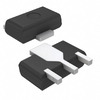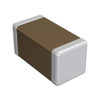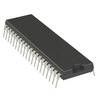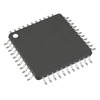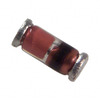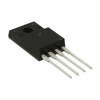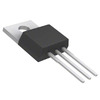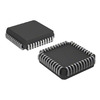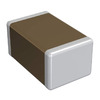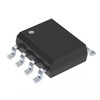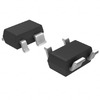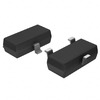Comprehensive Guide to MAP Sensors: Function, Types, Issues, and Maintenance
The Manifold Absolute Pressure (MAP) sensor is a part of car engines today, helping the engine work well by managing how much fuel goes in and when the spark plugs fire. This sensor measures the air pressure inside the part of the engine called the intake manifold and sends this information to the Engine Control Module (ECM). The ECM then uses this data to adjust how the engine runs, making sure it operates smoothly under different driving situations, like speeding up or slowing down. This article takes a close look at how the MAP sensor works, its features, different types it comes in, common problems that can happen if the sensor isn't working right, and ways to find out what's wrong when there are issues.Catalog

What is a MAP Sensor?
A Manifold Absolute Pressure (MAP) sensor is a component of a vehicle’s engine management system, responsible for ensuring optimal performance and efficiency. It measures the air pressure inside the intake manifold and sends this data to the Engine Control Unit (ECU), which then adjusts fuel injection and ignition timing accordingly. By constantly monitoring these pressure changes, the ECU can determine the right amount of air-fuel mixture needed for combustion. The MAP sensor is mounted on or near the intake manifold, often close to the throttle body or cylinder head, where it can provide accurate readings of the engine’s air pressure levels. data helps the engine adapt to various driving conditions, improving overall responsiveness and fuel efficiency.
The MAP sensor plays a role in optimizing fuel consumption, ensuring smooth acceleration, and extending engine lifespan. Since the engine requires different air-fuel ratios under different loads, the sensor allows for precise fuel adjustments, preventing issues like engine knocking, poor fuel economy, and sluggish performance. A malfunctioning MAP sensor can send incorrect pressure readings to the ECU, leading to symptoms such as rough idling, hesitation during acceleration, excessive fuel consumption, or even stalling. Regular maintenance and timely replacements of a failing MAP sensor can prevent costly engine repairs and help maintain consistent vehicle performance. You should routinely inspect the sensor for carbon buildup, wiring damage, or vacuum leaks to ensure it continues functioning properly.
The MAP sensor operates using a diaphragm and strain gauge, which work together to detect changes in pressure between the intake manifold and the outside air. As the diaphragm flexes in response to pressure fluctuations, it alters the electrical resistance in the strain gauge, creating a voltage signal that the ECU interprets. This signal helps the ECU adjust engine settings for optimal operation under different conditions, such as high-speed acceleration or idling. If a MAP sensor fails, mechanics use an OBD-II scanner to check for diagnostic trouble codes (DTCs), inspect vacuum lines for leaks, and test the sensor’s voltage output. If replacement is needed, installing a new MAP sensor is a straightforward process that can improve engine performance and fuel efficiency. Keeping the MAP sensor in good working order is required for ensuring a smooth and efficient driving experience.
MAP Sensor Features
A MAP (Manifold Absolute Pressure) sensor has several important features that help the engine run smoothly. Below are some of its key features:
• Wide Measurement Range
The MAP (Manifold Absolute Pressure) sensor operates within a voltage range of 0 to 5 volts, enabling it to detect even the slightest variations in pressure inside the intake manifold. This capability allows the Engine Control Module (ECM) to continuously analyze the engine’s air pressure and make adjustments to fuel injection and ignition timing. By maintaining an optimal air-fuel mixture, the sensor helps prevent issues such as engine knocking, hesitation, or excessive fuel consumption. A broad measurement range ensures that the engine adapts smoothly to different driving conditions, whether the vehicle is accelerating, idling, or operating under heavy loads. Without an accurate and responsive MAP sensor, the ECM may miscalculate fuel delivery, leading to poor engine performance and increased emissions. Therefore, having a sensor with a wide and reliable measurement range is important for maintaining fuel efficiency, power output, and overall engine health.
• High Accuracy
Precision is one of the most features of a MAP sensor, as it directly impacts the engine’s ability to adjust fuel and ignition settings. Since the engine experiences different loads such as when a driver accelerates, decelerates, or climbs a steep hill, the sensor must provide highly accurate pressure readings to prevent performance issues. A slight miscalculation in pressure data could lead to excessive fuel consumption, erratic idling, or engine hesitation. By delivering precise information, the MAP sensor allows the ECM to ensure optimal combustion efficiency, reducing emissions and improving fuel economy. In modern vehicles, advanced MAP sensors use high-resolution sensing elements to enhance accuracy, ensuring that even minor fluctuations in pressure are detected and relayed instantly. This accuracy is important in turbocharged engines, where rapid pressure changes occur, and the fuel mixture must be finely tuned to prevent engine damage and maintain power output.
• Durability in Harsh Conditions
Located in the heart of the engine bay, the MAP sensor is constantly exposed to extreme temperatures, vibrations, and contaminants such as dust, oil, and fuel vapors. Despite these harsh conditions, the sensor must maintain its functionality over long periods. High-quality MAP sensors are built using rugged materials that can withstand temperature fluctuations and engine vibrations without losing accuracy. Some sensors come with protective coatings or sealed housings to prevent moisture or debris from affecting their performance. Durability is key because a failing MAP sensor can cause engine misfires, rough idling, or a loss of power, which can be both frustrating and costly for vehicle owners. Regular wear and tear can degrade sensor performance, so investing in a high-quality, long-lasting sensor can minimize the need for frequent replacements and prevent unexpected breakdowns.
• Fast Response Time
A high-performance MAP sensor must be able to react instantly to fluctuations in manifold pressure, ensuring that the ECM can make split-second adjustments to the air-fuel mixture. A slow or lagging sensor could cause delayed throttle response, hesitation, or even misfires. When a driver suddenly accelerates or decelerates, the pressure inside the intake manifold changes rapidly, and the MAP sensor must send updated readings to the ECM without delay. Modern MAP sensors are designed with high-speed electronic components that allow for nearly instantaneous data transmission, helping maintain smooth acceleration and efficient fuel combustion. A fast-responding MAP sensor also enhances vehicle safety by ensuring that the engine doesn’t stall or lose power at serious moments, such as when merging onto a highway or overtaking another vehicle.
• Compatible Output Signals
To function properly, a MAP sensor must communicate seamlessly with the vehicle’s ECM, which requires compatibility with the correct signal type, either voltage-based (analog) or frequency-based (digital). The sensor converts pressure readings into an electrical signal that the ECM interprets to adjust fuel injection and ignition timing. If the output signal is weak, inconsistent, or incompatible with the vehicle’s system, the ECM may misinterpret the data, leading to poor engine performance, increased emissions, or even triggering warning lights on the dashboard. Many design MAP sensors to match the specific electrical requirements of different vehicle models, ensuring that the sensor’s output remains stable and precise. High-quality MAP sensor with a strong, reliable signal output can improve overall engine performance and fuel efficiency, while also preventing false error codes that might lead to unnecessary repairs.
• Built-in Diagnostic Features
MAP sensors come with self-diagnostic capabilities, allowing the vehicle’s ECM to detect potential sensor failures before they cause engine problems. If the sensor begins to provide inconsistent or incorrect readings, it can trigger a check engine light (CEL) and store a diagnostic trouble code (DTC) in the ECM’s memory. This feature helps mechanics quickly identify the issue without extensive troubleshooting, saving time and reducing repair costs. Early detection of a failing MAP sensor prevents serious consequences such as engine knocking, loss of power, or inefficient fuel combustion, which can lead to expensive repairs if left unaddressed. Some advanced MAP sensors even have fail-safe mechanisms, allowing the ECM to enter a limp mode if the sensor completely fails, preventing further engine damage. These built-in diagnostics ensure that the engine operates as efficiently as possible while minimizing the risk of sudden failures.
MAP Sensor Structure
The MAP (Manifold Absolute Pressure) sensor is carefully designed to measure air pressure inside the engine’s intake manifold. It has several key parts that work together to send accurate information to the Engine Control Module (ECM). These components ensure that the engine receives the correct fuel mixture for smooth and efficient operation.
Silicon Diaphragm: The Heart of the Sensor
At the core of the MAP sensor lies the silicon diaphragm, a thin yet highly sensitive component responsible for detecting pressure variations. This diaphragm is made of micro-machined silicon or another flexible semiconductor material, designed to react precisely to the changing pressure inside the intake manifold. As the engine runs, the pressure within the manifold fluctuates depending on throttle position, engine load, and altitude changes. The diaphragm responds by bending or flexing in proportion to these variations. When the diaphragm moves, it causes a measurable change in electrical properties, such as resistance or capacitance.
These minute changes are need for the sensor’s operation, as they serve as the raw data needed to determine the exact pressure level. Since the pressure inside the intake manifold directly influences fuel injection and ignition timing, the diaphragm’s accuracy is good for ensuring efficient combustion. The durability of the silicon diaphragm is also an important factor in the sensor’s performance. Given the harsh environment inside an engine bay where high temperatures, vibrations, and contaminants are present, the diaphragm must be designed to withstand these conditions without degrading over time. Protective coatings are often used to enhance the diaphragm’s longevity and reliability, ensuring consistent performance throughout the sensor’s lifespan.
Signal Processing: Converting Pressure into Data
The electrical response generated by the diaphragm’s movement is extremely small and requires additional processing before it can be used by the ECM. This is where the signal processing circuitry inside the MAP sensor comes into play. These circuits amplify and refine the weak signal produced by the diaphragm, converting it into a form that the ECM can accurately interpret. Most MAP sensors use a type of resistive or capacitive sensing mechanism, which translates pressure changes into an electrical signal. However, since the initial signal is too weak to be reliable, an amplifier circuit is incorporated into the sensor to strengthen the data before transmission.
This amplification process eliminates noise or interference that could lead to inaccurate readings, ensuring the ECM receives precise pressure information. Once amplified, the electrical signal is further processed to create a standardized output. This is necessary because different vehicles and ECM systems require different signal formats. Some sensors use voltage-based analog signals, while others employ frequency-based digital signals. The ability to fine-tune and process these signals allows the MAP sensor to function effectively across a wide range of vehicle makes and models, ensuring compatibility with various engine control architectures.
Analog and Digital Outputs: Communicating with the ECM
After the signal has been processed, it must be sent to the ECM in a format that can be properly interpreted. MAP sensors use either analog or digital output methods, depending on the vehicle’s design and the type of ECM in use. These output signals allow the ECM to adjust fuel injection, ignition timing, and other engine parameters based on the measured manifold pressure. Analog MAP sensors output a continuously varying voltage signal. In this system, the voltage increases or decreases proportionally to the manifold pressure. For example, at higher pressures (such as during full throttle), the sensor might output a higher voltage, while at lower pressures (such as when idling or decelerating), the voltage would be lower. The ECM reads these voltage changes in time and makes precise adjustments accordingly.
In contrast, digital MAP sensors use a pulse-based or frequency-modulated signal. Instead of a continuous voltage, these sensors send data in the form of on-off pulses or frequency changes, which the ECM then decodes into pressure readings. Digital signals are less prone to interference and can be more precise in certain applications, making them preferable for high-performance or modern engine systems. Regardless of the output type, the ECM relies on this information to maintain optimal combustion, preventing issues such as misfires, knocking, or inefficient fuel consumption.
Temperature Compensation: Ensuring Accuracy in All Conditions
Temperature fluctuations canaffect pressure readings, which is why temperature compensation is a feature in MAP sensor design. Since air expands or contracts with changes in temperature, unadjusted readings could result in incorrect fuel-air mixture calculations. To prevent this, modern MAP sensors incorporate a temperature compensation circuit, which corrects for environmental variations to ensure accurate pressure measurements. This circuit consists of a thermistor or other temperature-sensitive components that detect changes in ambient or intake air temperature. When the temperature increases or decreases, the sensor adjusts the pressure reading accordingly, preventing errors in fuel delivery.
Without temperature compensation, a MAP sensor could misinterpret air density changes, leading to rich or lean fuel mixtures, poor engine performance, and even increased emissions. The importance of temperature compensation becomes evident in extreme weather conditions. In cold climates, air is denser, which could lead to over-fueling if the sensor doesn’t account for the temperature drop. In hot conditions, air expands, and without compensation, the ECM might reduce fuel delivery too much, causing hesitation or power loss. By integrating temperature correction, the MAP sensor ensures the engine runs efficiently, regardless of external temperature changes.
Built-in Diagnostics: Detecting Problems Early
To enhance reliability and simplify maintenance, many modern MAP sensors come with self-diagnostic capabilities. These built-in monitoring systems help detect sensor malfunctions and communicate issues to the ECM. If a problem is detected such as a faulty diaphragm, wiring issue, or inconsistent signal output, the ECM can log an error code and, in most cases, trigger a Check Engine Light (CEL) on the dashboard. The ECM continuously monitors the MAP sensor’s signal for abnormalities. If the sensor’s output deviates from expected values such as reading an unrealistically high or low pressure for a given engine condition, the ECM flags it as a potential failure.
Mechanics can then retrieve the diagnostic trouble codes (DTCs) using a scan tool, allowing for quick identification and troubleshooting of sensor-related problems. MAP sensors help prevent more serious engine issues. Early detection of faults can prevent problems such as excessive fuel consumption, poor acceleration, rough idling, or engine misfires. This not only improves vehicle reliability but also reduces repair costs by allowing timely sensor replacement before it leads to severe engine performance issues.

Figure 2. MAP Sensor Structure
MAP Sensor Types
MAP (Manifold Absolute Pressure) sensors come in different types, designed to meet the specific needs of various engine systems. Each type measures air pressure differently, ensuring the engine control system gets the most accurate data for fuel adjustment, ignition timing, and overall engine performance. Understanding these types helps in choosing the right sensor for a vehicle’s requirements. Below are the main types of MAP sensors, along with their unique functions and advantages.
Absolute Pressure MAP Sensor
An absolute pressure MAP sensor measures the exact air pressure inside the intake manifold by using a perfect vacuum (zero pressure) as its reference point. This means that the sensor does not consider atmospheric pressure variations but instead focuses solely on the actual pressure levels inside the engine's intake manifold. Because it relies on an unchanging vacuum reference, it provides consistent readings regardless of external environmental conditions such as altitude or weather. This type of sensor is beneficial in high-performance and forced induction (turbocharged or supercharged) engines, where maintaining precise pressure readings is good for optimizing power output and fuel efficiency.
Unlike other sensors that might be influenced by atmospheric pressure fluctuations, the absolute pressure MAP sensor ensures that the engine operates efficiently under a wide range of driving conditions. It is often used in vehicles that frequently travel across varying elevations, as changes in altitude do not affect its pressure readings. By continuously providing accurate and stable manifold pressure data, absolute pressure MAP sensors enable the ECM to make adjustments to fuel injection and ignition timing. This allows the engine to maintain optimal combustion efficiency, reduce emissions, and enhance overall performance. The reliability of absolute pressure MAP sensors makes them a preferred choice for performance-focused and high-altitude applications.

Figure 3. Absolute Pressure MAP Sensor
Gauge Pressure MAP Sensor
A gauge pressure MAP sensor functions by measuring the difference between the intake manifold pressure and the atmospheric pressure surrounding the engine. Unlike the absolute pressure MAP sensor, which references a perfect vacuum, the gauge pressure sensor constantly compares manifold pressure to external air pressure. This relative measurement makes it well-suited for naturally aspirated engines, which rely on atmospheric conditions for proper combustion and efficiency. In naturally aspirated engines, those without turbochargers or superchargers, external air pressure impacts engine performance. As atmospheric pressure changes due to weather, altitude, or environmental conditions, the gauge pressure MAP sensor helps the ECM adjust fuel delivery and ignition timing accordingly.
This ensures that the engine continues to run efficiently, regardless of external pressure variations. For instance, when driving at higher altitudes where atmospheric pressure is lower, the ECM will compensate by modifying the air-fuel ratio to maintain smooth operation. By continuously monitoring the pressure difference between the intake manifold and the outside environment, the gauge pressure MAP sensor ensures optimal engine function. It helps improve fuel efficiency, supports smooth acceleration, and maintains stable idling. This adaptability makes it a common choice in vehicles that operate in varied environmental conditions where atmospheric pressure fluctuations must be accounted for.

Figure 4. Gauge Pressure MAP Sensor
Differential Pressure MAP Sensor
A differential pressure MAP sensor measures the pressure difference between two specific points in the intake system rather than simply referencing external atmospheric pressure or a vacuum. Typically, this sensor compares pressure levels between the intake manifold and the throttle body or another location within the intake system. By providing a more detailed measurement of airflow and pressure variations, it is useful for detecting performance issues related to air intake and engine breathing. This type of sensor is valuable in advanced engine management systems that require precise diagnostics for airflow-related problems.
For example, if there is a clog in the air filter, a vacuum leak, or an obstruction in the throttle body, the differential pressure MAP sensor can detect an unusual pressure drop or increase. When such discrepancies occur, the ECM receives data from the sensor and can trigger a warning light or adjust engine settings to compensate for the issue. Because of its ability to diagnose airflow inefficiencies, the differential pressure MAP sensor is commonly used in vehicles with complex intake systems, turbocharged engines, and emissions control systems. It helps maintain optimal air intake, prevents performance issues such as reduced power output or poor fuel economy, and contributes to overall engine efficiency. This makes it an important component in modern diagnostic and emission-reduction strategies.

Figure 5. Differential Pressure MAP Sensor
Frequency Output MAP Sensor
A frequency output MAP sensor transmits pressure data to the ECM using a varying frequency signal instead of a voltage signal. As the manifold pressure changes, the sensor adjusts the frequency of its signal pulses, which the ECM then interprets to determine the appropriate fuel mixture and ignition settings. This method of data transmission is effective in environments where electrical noise and interference could disrupt traditional voltage-based signals. Frequency output MAP sensors were widely used in older vehicle models and specialized engine systems, especially in applications where electrical stability was a priority. Because frequency-based signals are less susceptible to distortion from electromagnetic interference, these sensors were often favored in high-performance or industrial engines that operated under extreme conditions.
They were common in early electronic fuel injection systems. Although these sensors are not as widely used in modern vehicles due to advancements in voltage-based MAP sensors, they are still found in certain legacy systems. Some specialized vehicles and industrial applications continue to use frequency output sensors for their durability and resistance to signal noise. While newer technologies have largely replaced them, they remain an important part of automotive history and specific engineering applications.
Analog Voltage Output MAP Sensor
An analog voltage output MAP sensor operates by sending a continuously varying voltage signal to the ECM, corresponding to changes in manifold pressure. As the intake manifold pressure increases or decreases, the sensor produces a proportionate voltage output that the ECM uses to make adjustments in fuel injection, ignition timing, and other engine functions. This type of MAP sensor is the most commonly used in modern vehicles due to its precision, simplicity, and seamless integration with electronic control systems. The ECM can rapidly process voltage signals from the sensor to make modifications, ensuring that the engine runs efficiently under various driving conditions.
The smooth, continuous nature of the voltage output allows for precise control over air-fuel mixtures, leading to better fuel economy, reduced emissions, and improved engine performance. However, one potential drawback of voltage output MAP sensors is their susceptibility to electrical interference, which can occasionally cause inaccurate readings or signal disruptions. Despite this, advances in shielding and filtering technologies have minimized these concerns, making analog voltage output MAP sensors the preferred choice. Their reliability, affordability, and compatibility with contemporary ECMs ensure their continued widespread use in automotive applications.
MAP Sensor Function
The MAP (Manifold Absolute Pressure) sensor is more than just a tool for measuring air pressure inside the engine. It plays a role in engine management by helping the Engine Control Module (ECM) adjust fuel delivery and ignition timing based on the amount of air entering the engine. This adjustment is needed because engines operate under different conditions, such as accelerating, idling, or driving up a hill. The MAP sensor ensures the engine gets the right air-fuel mixture at all times, which helps the vehicle run smoothly and efficiently.
One of the most important jobs of the MAP sensor is to help control fuel efficiency. When the engine needs more power, such as during hard acceleration, the sensor detects low pressure in the intake manifold and signals the ECM to increase fuel injection. On the other hand, when the car is cruising at a steady speed, the sensor detects higher pressure, allowing the ECM to reduce fuel consumption to improve mileage. This process helps drivers save money on fuel while maintaining strong engine performance.
Another major function of the MAP sensor is regulating ignition timing. Ignition timing determines when the spark plugs ignite the fuel inside the engine. If the spark occurs too early or too late, the engine may misfire, lose power, or waste fuel. The MAP sensor helps the ECM adjust the timing of the spark based on the air pressure levels, ensuring the engine runs smoothly without knocking or hesitation. This is important in turbocharged and high-performance engines, where precise timing is necessary for optimal power and efficiency.
The MAP sensor also plays a role in reducing emissions. By providing accurate data to the ECM, it helps ensure that the air-fuel ratio is neither too rich (too much fuel) nor too lean (too little fuel). A properly balanced mixture ensures that the engine burns fuel cleanly, reducing harmful gases like carbon monoxide (CO), hydrocarbons (HC), and nitrogen oxides (NOx). This function is important for meeting environmental regulations and keeping the vehicle compliant with emissions standards.
Causes of a Bad MAP Sensor
A faulty MAP (Manifold Absolute Pressure) sensor can lead to poor engine performance, reduced fuel efficiency, and rough idling. Several factors can cause the MAP sensor to fail, making it needed to identify and address these issues early. Below are the main causes of a bad MAP sensor, along with detailed explanations.
Sensor Age and Wear Over Time
Over time, the MAP sensor naturally wears out due to continuous use. The internal components, including the diaphragm and electronic circuits, can degrade, leading to inaccurate pressure readings. As the sensor ages, its ability to detect air pressure changes weakens, causing the Engine Control Unit (ECU) to receive incorrect data. This may result in poor acceleration, rough idling, or increased fuel consumption. Older sensors may also develop internal electrical faults, leading to delayed or no response from the sensor. Regular maintenance checks and timely replacement of an aging MAP sensor can help prevent unexpected engine problems.
Exposure to Extreme Temperatures and Vibrations
The engine bay is a harsh environment, exposing the MAP sensor to high heat, strong vibrations, and constant pressure changes. Extreme temperatures can cause sensor components to expand and contract, leading to cracks, loose connections, or internal damage. Continuous engine vibrations can weaken the sensor's housing, causing internal circuits to break or develop loose wiring connections. If the sensor becomes unstable due to vibration damage, it may send fluctuating or inaccurate signals to the ECU. Keeping the sensor properly secured and ensuring good insulation can help prevent temperature and vibration-related failures.
Vacuum Leaks in the Intake System
A vacuum leak is one of the most common causes of incorrect MAP sensor readings. The sensor relies on accurate pressure readings from the intake manifold to function correctly. If there is a leak in the vacuum hose or intake system, the sensor may detect false pressure levels, causing the ECU to miscalculate fuel delivery and ignition timing. Vacuum leaks can occur due to cracked or loose vacuum hoses connected to the MAP sensor, worn-out gaskets around the intake manifold, and leaks near the throttle body or intake valves. Symptoms of a vacuum leak affecting the MAP sensor include rough idling, stalling, or loss of power. Checking for loose or damaged vacuum lines and sealing leaks promptly can prevent inaccurate sensor readings.
Contamination from Dirt, Oil, and Debris
Dirt, oil, and carbon buildup can clog the MAP sensor, affecting its ability to measure pressure accurately. Contamination often occurs due to oil vapors from the crankcase ventilation system, dirty air filters, or exposure to engine grime and road debris. When the sensor becomes clogged, it may send delayed or incorrect signals to the ECU, leading to poor fuel efficiency and sluggish performance. In severe cases, contamination can block the sensor completely, preventing it from functioning. Regular cleaning of the intake system and replacing air filters can help prevent buildup and ensure accurate sensor readings.
Manufacturing Defects and Poor-Quality Sensors
While not very common, some MAP sensors may have factory defects or poor-quality components that cause early failure. Low-quality sensors may not withstand harsh engine conditions, leading to inaccurate readings or short lifespans. Symptoms of a defective sensor include erratic engine behavior, such as sudden stalling, misfires, or difficulty starting the vehicle. Using OEM (Original Equipment Manufacturer) or high-quality aftermarket sensors can help avoid premature failure caused by manufacturing defects.
Faulty Wiring, Loose Connections, or Improper Installation
The MAP sensor relies on electrical wiring to send signals to the ECU. Damaged wires, corroded connectors, or improper installation can interfere with signal transmission, causing the sensor to send incorrect data or stop working altogether. Common wiring-related issues include frayed or broken wires due to wear and tear, corroded or dirty connectors preventing a strong electrical connection, and loose sensor mounting, causing unstable readings. If the sensor is not installed correctly, it may not align properly with the intake manifold, leading to pressure reading errors. Checking the wiring connections, ensuring a secure installation, and replacing damaged wires can help restore proper sensor function.
How Does a MAP Sensor Work?
A Manifold Absolute Pressure (MAP) sensor is an important part of a vehicle’s engine management system. It helps the Engine Control Unit (ECU) determine how much air is entering the engine, which allows for accurate adjustments to fuel injection and ignition timing. Without a properly functioning MAP sensor, the engine may struggle with poor performance, rough idling, and increased fuel consumption. At its core, the MAP sensor works by measuring air pressure inside the intake manifold. The intake manifold is the part of the engine where air mixes with fuel before entering the combustion chamber. Since the amount of air in the engine changes based on throttle position, engine load, and speed, the MAP sensor provides pressure readings to the ECU. These readings help the ECU adjust the air-fuel mixture, ensuring the engine receives the right amount of fuel at the right time.
The MAP sensor uses a diaphragm and an electronic circuit to measure air pressure changes. Inside the sensor, there are two chambers: one side is exposed to ambient (outside) air, and the other is connected to the intake manifold. When the engine is running, the air pressure inside the manifold constantly changes depending on how much the throttle opens or closes. As this pressure changes, the diaphragm inside the sensor moves or flexes, and this movement is converted into an electrical signal that is sent to the ECU.
The MAP sensor operates on a 5-volt reference system, meaning it has three electrical connections: a reference voltage, a signal return, and a ground wire. The Powertrain Control Module (PCM), which manages various engine functions, provides the 5-volt reference signal to the sensor. The MAP sensor then adjusts this voltage based on the air pressure in the intake manifold. If the pressure is high (more air entering the engine, such as during acceleration), the sensor increases the output voltage. If the pressure is low (less air entering, such as when idling or decelerating), the voltage decreases. This variable signal is sent back to the PCM, allowing it to calculate the engine’s air intake and adjust fuel injection accordingly.

Figure 6. Cross-Sectional and External Views of a MAP Sensor
When the throttle is fully open, such as during hard acceleration, the pressure inside the intake manifold is close to atmospheric pressure, meaning there is less vacuum. The MAP sensor detects this change and signals the ECU to increase fuel injection, providing the engine with more power. On the other hand, when the throttle is nearly closed, such as when the car is slowing down or idling, there is higher vacuum pressure in the intake manifold. The MAP sensor detects this and tells the ECU to reduce fuel injection, helping to save fuel and prevent excessive emissions.
Another function of the MAP sensor is its role in ignition timing adjustment. The ECU uses the sensor’s pressure readings to determine the best time to ignite the air-fuel mixture inside the cylinders. If the pressure is high (indicating a heavy load on the engine), the ECU advances the ignition timing to increase power and efficiency. If the pressure is low, the ECU retards the timing to prevent knocking or misfires, ensuring a smooth-running engine.
The MAP sensor is also used in diagnostics and emissions control. If the sensor provides incorrect readings due to damage, contamination, or wiring issues, the ECU may register a trouble code and turn on the Check Engine Light (CEL). Common symptoms of a faulty MAP sensor include hesitation during acceleration, poor fuel economy, engine stalling, or black smoke from the exhaust. Since the sensor plays a role in maintaining the correct air-fuel mixture, a malfunctioning MAP sensor can lead to higher emissions and potential failure in emissions tests.
MAP Sensor Codes
When a MAP (Manifold Absolute Pressure) sensor is not working correctly, the vehicle’s Engine Control Unit (ECU) may store a trouble code and turn on the Check Engine Light (CEL). These trouble codes, also known as Diagnostic Trouble Codes (DTCs), help mechanics and vehicle owners identify and fix sensor-related problems. The codes can be retrieved using an OBD-II scanner, a tool that reads stored fault codes from the vehicle’s computer. Below are the most common MAP sensor-related trouble codes, along with their explanations.
• P0105: MAP Sensor Circuit Malfunction
A P0105 trouble code is triggered when the Engine Control Unit (ECU) detects an issue within the Manifold Absolute Pressure (MAP) sensor circuit. The MAP sensor plays a role in monitoring the air pressure within the intake manifold, allowing the ECU to calculate the appropriate air-fuel mixture for optimal engine performance. When this circuit experiences a malfunction, it can be due to various factors, such as loose or damaged wiring, corroded electrical contacts that interfere with proper signal transmission, or a failing sensor that no longer provides accurate readings. Because the MAP sensor is responsible for sending data to the ECU, any disruption in its function can impact engine efficiency and drivability.
When the MAP sensor circuit fails to transmit correct pressure readings, the ECU may struggle to adjust the air-fuel mixture correctly, leading to various performance issues. You may experience symptoms such as poor fuel efficiency, hesitation during acceleration, or even unexpected engine stalling. Since the ECU relies on accurate pressure data to regulate combustion, incorrect readings can result in an overly rich or lean mixture, negatively affecting both power and emissions. To resolve this issue, inspect the wiring connections for damage, test the sensor’s output to confirm if it is functioning correctly, and replace any faulty components as needed. Addressing the problem early can help prevent further engine performance issues and ensure smooth operation.
• P0106: MAP Sensor Range/Performance Problem
A P0106 trouble code occurs when the ECU detects that the MAP sensor is providing pressure readings that fall outside the expected range. This means that the sensor is either detecting values that are too high or too low in relation to the engine’s current operating conditions. Since the MAP sensor is designed to monitor intake manifold pressure and adjust fuel delivery accordingly, any incorrect readings can cause performance disruptions. Several factors can contribute to this issue, including a malfunctioning sensor that provides inaccurate pressure readings, vacuum leaks in the intake manifold or connected hoses, and contamination from dirt or debris interfering with the sensor’s ability to measure pressure accurately.
When the ECU receives incorrect pressure data, it may struggle to balance the air-fuel mixture correctly, leading to noticeable symptoms such as engine hesitation, rough idling, misfires, and an increase in harmful emissions. If the MAP sensor sends abnormally high pressure readings, the ECU may inject excessive fuel, causing inefficient combustion and increased fuel consumption. Conversely, if the sensor underestimates the pressure, the engine may not receive enough fuel, resulting in poor acceleration and sluggish performance. To diagnose and resolve this problem, mechanics clean the MAP sensor to remove any debris, inspect the intake manifold and hoses for vacuum leaks, and replace the sensor if it is determined to be faulty.
• P0107: MAP Sensor Circuit Low Input
A P0107 trouble code is set when the MAP sensor sends a voltage signal to the ECU that is lower than the expected range. Since the MAP sensor measures air pressure within the intake manifold, its voltage output should correspond to actual engine conditions. When the signal is too low, the ECU may misinterpret this as an indication of very low pressure, even if the manifold pressure is within normal operating levels. This issue is often caused by a failing MAP sensor that is unable to generate the proper voltage signal, electrical problems such as short circuits or corroded connectors, or vacuum leaks that lead to incorrect pressure readings within the intake system.
A faulty MAP sensor that reports abnormally low pressure can cause noticeable performance issues, including loss of engine power, poor throttle response, rough idling, and, in severe cases, engine stalling. Because the ECU uses manifold pressure data to calculate the correct air-fuel mixture, a low input signal can cause the engine to run too lean, leading to an imbalance in combustion. Diagnosing this issue requires checking the wiring and connectors for any damage or corrosion, testing the sensor’s voltage output with a multimeter to determine if it is within the expected range, and replacing the sensor if it is not functioning correctly. Identifying and fixing the root cause of this problem promptly can prevent further performance deterioration and potential engine damage.
• P0108: MAP Sensor Circuit High Input
A P0108 trouble code appears when the ECU detects a voltage signal from the MAP sensor that is higher than expected. This suggests that the sensor is reporting unusually high intake manifold pressure, which may not accurately reflect the engine’s actual conditions. Since the MAP sensor helps regulate fuel injection and ignition timing, incorrect readings can lead to improper combustion and poor engine performance. Common causes of this issue include a malfunctioning MAP sensor that sends incorrect signals, wiring problems such as open circuits or damaged connectors, and airflow restrictions due to a clogged intake manifold or throttle body, which can create misleading pressure readings.
When the MAP sensor provides abnormally high input values, the ECU may respond by injecting more fuel than necessary, leading to excessive fuel consumption and inefficient combustion. You may notice symptoms such as black smoke coming from the exhaust due to an overly rich air-fuel mixture, rough engine operation, and increased fuel costs. Incorrect pressure readings can cause the engine to run inefficiently, potentially triggering a check engine light. To diagnose and fix the issue, inspect the wiring and sensor for damage, clean the intake system to remove any blockages, and replace the sensor if it is determined to be defective. Addressing this problem promptly helps restore proper fuel efficiency and engine performance.
• P0109: MAP Sensor Circuit Intermittent
A P0109 trouble code is triggered when the MAP sensor sends an inconsistent or unstable signal to the ECU. Instead of providing a steady voltage reading that corresponds to manifold pressure, the signal fluctuates unpredictably, making it difficult for the ECU to accurately adjust fuel delivery and ignition timing. This type of problem is often caused by loose or corroded wiring connections that intermittently disrupt the signal, a failing sensor that only works sporadically, or damage to the wiring harness due to engine vibrations. Because the MAP sensor plays a role in engine management, an intermittent issue can lead to erratic performance and unexpected drivability concerns.
When the MAP sensor signal is unstable, you may experience symptoms such as hesitation during acceleration, sudden power loss, engine surging, or unpredictable changes in throttle response. These irregularities can make the vehicle difficult to drive and may lead to additional strain on other engine components. Diagnosing this issue involves checking for loose or damaged wiring, ensuring all electrical connectors are secure and free of corrosion, and testing the sensor under different conditions to see if the signal remains stable. If the sensor continues to send erratic signals, replacing it with a new one is often the best solution to restore consistent engine performance and prevent further complications.
How to Use a MAP Sensor?
A Manifold Absolute Pressure (MAP) sensor is an important component in a vehicle’s engine system. It helps the Engine Control Module (ECM) adjust the air-fuel mixture for better fuel efficiency, smoother acceleration, and reduced emissions. To use a MAP sensor correctly, it must be properly installed, calibrated, and tested to ensure it provides accurate readings. Below is a detailed guide on how to locate, connect, test, and troubleshoot a MAP sensor for the best engine performance.
Locating the MAP Sensor
Before using a MAP sensor, the first step is to identify its exact location within the engine bay. The MAP sensor is mounted on or near the intake manifold, which is the component responsible for distributing air to the engine cylinders. It is commonly found near the throttle body, as it needs to detect pressure variations when the throttle opens and closes. The exact placement of the sensor depends on the vehicle make and model, so referring to the service manual can provide specific details on its location. In most cases, it is a small, rectangular sensor with an electrical connector and, in some designs, a vacuum hose attached to it.
To locate the MAP sensor accurately, inspect the intake manifold for a sensor that is either bolted onto the manifold itself or connected via a vacuum hose. The sensor will have a wiring harness with multiple wires leading to the ECM. If the vehicle's engine layout makes it difficult to find the sensor, using an online repair guide or consulting a mechanic can be helpful. It is important to ensure that the sensor is in good condition and free from excessive dirt, debris, or oil buildup, as these contaminants can interfere with its ability to provide accurate pressure readings.

Figure 7. Location of the MAP Sensor
Connecting the MAP Sensor
Proper connection of the MAP sensor is important to ensure that it accurately communicates with the ECM. The sensor is connected via a three-wire electrical harness, each wire serving a specific function. The first wire is the reference voltage (5V), which is supplied by the ECM to power the sensor. The second wire is the signal wire, which transmits the pressure readings back to the ECM for processing. The third wire is the ground wire, which ensures a stable electrical flow and prevents signal interference. A poor connection in any of these wires can lead to incorrect readings and potential engine performance issues.
Before connecting the MAP sensor, inspect the wiring harness for any signs of wear, such as frayed wires, corrosion, or loose connections. Plug the electrical connector firmly into the sensor to ensure a secure fit. If the sensor utilizes a vacuum hose, check for cracks, leaks, or disconnections, as any vacuum leak can cause the sensor to provide inaccurate readings. A damaged hose should be replaced to prevent air pressure fluctuations from affecting engine performance. Once the sensor is securely connected, verify that the wiring is properly routed and not in contact with hot engine components that could cause damage over time.
Calibrating the MAP Sensor
In some vehicles, after installing a new MAP sensor, calibration may be require to ensure accurate pressure readings. Calibration is the process of synchronizing the sensor with the ECM so that it correctly measures manifold pressure across different operating conditions. Without proper calibration, the sensor might send incorrect signals, leading to improper fuel adjustments, engine hesitation, or even stalling. Not all vehicles require manual calibration, as some sensors are pre-calibrated by the manufacturer. However, for those that do, following the correct calibration procedure is help to maintain engine efficiency.
To calibrate a MAP sensor, a diagnostic scan tool that supports sensor calibration is required. First, connect the scan tool to the vehicle’s OBD-II port and follow the manufacturer’s instructions to reset the ECM’s memory, clearing any stored data from the old sensor. Next, set the baseline pressure values according to the vehicle’s specifications. This process allows the ECM to recognize the new sensor’s readings and adjust fuel delivery accordingly. Once the calibration is complete, perform a test drive to ensure that the engine runs smoothly without hesitation or power loss. If performance issues persist, further troubleshooting may be needed.
Testing the MAP Sensor
Once the MAP sensor is installed and connected, it must be tested to confirm that it is functioning correctly. A faulty MAP sensor can cause a variety of engine performance issues, such as rough idling, poor acceleration, and increased fuel consumption. Testing the sensor involves checking its voltage output under different engine conditions to verify whether it is providing accurate pressure readings. This can be done using either a diagnostic scan tool or a multimeter, both of which allow for monitoring of the sensor’s output signals.
To test the MAP sensor with a diagnostic scan tool, start the engine and allow it to idle. Connect the scan tool to the vehicle’s OBD-II port and navigate to the sensor data menu. Observe the MAP sensor readings while gradually increasing and decreasing the engine speed. The sensor voltage should increase when accelerating and decrease when decelerating. If the voltage remains constant or shows irregular fluctuations, the sensor may be faulty. Alternatively, to test the MAP sensor with a multimeter, set it to DC voltage mode and connect the positive lead to the signal wire and the negative lead to ground. With the ignition on but the engine off, the voltage should read between 4.5V and 5V. Once the engine is running, the voltage should fluctuate according to throttle input. A consistently low or high voltage reading may indicate a faulty sensor, wiring issue, or vacuum leak, all of which require further inspection.

Figure 8. Testing the MAP Sensor
What are the Symptoms of a Faulty MAP Sensor?
Since the MAP sensor helps the Engine Control Module (ECM) adjust fuel delivery and ignition timing, any failure can lead to incorrect engine operation. Recognizing the symptoms of a bad MAP sensor early can help prevent serious engine damage and expensive repairs. Below are the most common warning signs of a faulty MAP sensor and how they affect the vehicle.
Check Engine Light (CEL) Turns On
One of the most immediate and noticeable signs of a failing MAP sensor is the illumination of the Check Engine Light (CEL) on the dashboard. The vehicle’s Onboard Diagnostic System (OBD-II) continuously monitors the MAP sensor’s functionality, and when the sensor provides erratic or incorrect readings, the ECM detects the issue and triggers the warning light. This warning indicates that the system has stored a diagnostic trouble code (DTC), which can be retrieved using an OBD-II scanner to help pinpoint the problem. While a Check Engine Light may not always signify a MAP sensor issue, it serves as an important alert that should not be ignored.
Common trouble codes related to a faulty MAP sensor include P0105 (MAP Sensor Circuit Malfunction), P0106 (MAP Sensor Range/Performance Issue), P0107 (MAP Sensor Voltage Too Low), and P0108 (MAP Sensor Voltage Too High). Each of these codes represents different types of MAP sensor failures, but all can lead to serious performance problems if left unresolved. If the Check Engine Light appears, promptly diagnosing the error code and addressing the sensor malfunction can prevent further damage to the engine and help restore optimal vehicle performance. Ignoring the CEL for an extended period can result in decreased fuel efficiency, rough driving conditions, and potential long-term mechanical issues.

Figure 9. Dashboard Displaying an Illuminated Check Engine Light (CEL)
Poor Engine Performance
A malfunctioning MAP sensor can affect the engine’s performance, leading to several noticeable issues. One common symptom is rough idling, where the engine shakes or vibrates excessively when the vehicle is at a standstill. You may also experience hesitation or sluggishness during acceleration, making the vehicle feel unresponsive or slow to gain speed. In some cases, the engine may stall unexpectedly, especially when coming to a stop at traffic lights or stop signs. This loss of stability in engine operation can make driving unpredictable and even unsafe, particularly in high-traffic conditions or when merging onto highways.
These performance issues occur because the MAP sensor sends incorrect pressure readings to the ECM, preventing it from properly adjusting the air-fuel mixture and ignition timing. As a result, the engine may not receive the correct amount of fuel, causing a loss of power and reduced overall efficiency. The vehicle may struggle to maintain speed while driving uphill or experience sudden drops in power under load. If left unaddressed, continued operation with a failing MAP sensor can lead to long-term engine wear, reduced responsiveness, and increased fuel consumption, ultimately making driving more frustrating and costly.
Decreased Fuel Efficiency
A faulty MAP sensor can cause the engine to consume more fuel than necessary, leading to reduced fuel efficiency and more frequent refueling. Since the MAP sensor helps determine the optimal air-fuel ratio by measuring intake manifold pressure, incorrect readings can lead to excessive fuel injection. This means the engine may burn more fuel than required, reducing the vehicle’s miles per gallon (MPG) and causing fuel costs to increase. You may notice they need to refuel more often than usual, even if their driving habits remain unchanged.
Another consequence of incorrect fuel delivery is an overly rich air-fuel mixture, where excess fuel is injected into the engine and goes unburned. This not only wastes fuel but also leads to increased exhaust emissions, making the vehicle less environmentally friendly. Signs of a rich mixture include black soot on spark plugs, a strong fuel smell from the exhaust, and higher-than-normal carbon buildup inside the engine. Addressing a faulty MAP sensor early can help restore proper fuel economy, reduce emissions, and improve overall engine efficiency, ultimately saving money and reducing environmental impact.
Engine Misfires and Vibrations
Engine misfires are another common symptom of a failing MAP sensor, as incorrect air pressure readings can disrupt the precise timing of fuel injection and combustion. When the air-fuel mixture is too lean or too rich, the fuel may not ignite properly inside the cylinders, causing hesitation, jerking, or rough acceleration. This results in a lack of smooth power delivery, making the driving experience less stable and more unpredictable. Engine misfires can also cause noticeable vibrations, particularly when idling or accelerating, as the incomplete combustion cycle affects the balance of engine operation.
If left unaddressed, repeated engine misfires can cause additional damage to components such as spark plugs, ignition coils, and catalytic converters. Unburned fuel passing through the exhaust system can lead to carbon buildup, clogging sensors and reducing engine efficiency over time. In severe cases, prolonged misfires can contribute to internal engine damage, requiring expensive repairs. If the vehicle begins shaking or hesitating while driving, inspecting the MAP sensor and addressing any issues promptly can help prevent long-term damage and restore smooth engine operation.
Black Smoke from the Exhaust
Excessive black smoke from the exhaust is a strong indicator that the engine is running too rich, which can often be caused by a faulty MAP sensor. When the ECM receives inaccurate pressure data, it may compensate by injecting more fuel than necessary, leading to incomplete combustion. This excess fuel exits through the exhaust system as black smoke, which is a visible sign that fuel is not being burned efficiently. You may also notice a strong gasoline smell from the exhaust, further confirming that the engine is over-fueling.
Another side effect of a rich fuel mixture is increased carbon deposits on engine components, such as spark plugs and oxygen sensors. These deposits can lead to poor engine performance, misfires, and increased emissions, further impacting the vehicle’s efficiency. Running the engine with excessive fuel for prolonged periods can also damage the catalytic converter, an expensive component responsible for reducing harmful emissions. Addressing the MAP sensor issue early can help prevent excessive fuel consumption, restore proper combustion, and reduce environmental pollution.

Figure 10. Visible Exhaust Fumes
Difficulty Starting the Engine
A failing MAP sensor can make starting the engine more difficult, particularly in cold weather or after the vehicle has been sitting for an extended period. Since the MAP sensor plays a role in determining the correct amount of fuel needed for combustion, incorrect pressure readings can cause an imbalance in fuel delivery. This can lead to longer cranking times before the engine starts, requiring multiple attempts to get the vehicle running.
In more severe cases, the engine may fail to start at all or start rough, sputtering for a few seconds before running smoothly. These starting issues can become more frequent as the MAP sensor deteriorates, leading to increased wear on the starter motor and battery. If the vehicle exhibits difficulty starting or experiences prolonged cranking, testing the MAP sensor and inspecting its electrical connections can help diagnose the problem before it worsens.
High Idle Speed
A faulty MAP sensor can cause the engine to idle at an unusually high speed due to incorrect air pressure readings being sent to the ECM. Normally, an engine should idle between 700–900 RPM, depending on the vehicle model. However, when the MAP sensor fails, the ECM may interpret false pressure levels and increase the idle speed. You may notice that the engine revs excessively when the vehicle is in neutral or park, even without pressing the accelerator.
In addition to higher fuel consumption, a persistently high idle can lead to increased wear and tear on engine components. Prolonged high idle speeds put extra strain on the throttle body, sensors, and other fuel system parts, reducing their lifespan. Addressing the MAP sensor issue promptly can help maintain a stable idle, improve fuel efficiency, and prevent excessive engine stress over time.
Replacing a Faulty MAP Sensor
A failing MAP sensor can cause poor engine response, increased fuel consumption, and black smoke from the exhaust. If the sensor is confirmed to be defective, replacing it with a new, high-quality sensor will help the engine function properly again. Although the process is fairly simple, it’s important to follow the correct steps to ensure a safe and successful replacement. Below is a detailed guide on how to replace a MAP sensor properly.
Gather the Necessary Tools and Parts
Before starting the replacement process, it’s important to have the right tools and equipment ready. Having everything prepared makes the replacement process quicker and easier. A new MAP sensor should be chosen based on compatibility with the vehicle’s make and model. A socket wrench or screwdriver is necessary to remove the sensor from the intake manifold. Electrical contact cleaner helps clean the sensor’s connection points for a secure fit. Gloves and safety glasses protect hands and eyes from dirt and debris. A vehicle service manual provides model-specific instructions if needed. Once all tools are ready, it’s time to start the replacement process.
Turn Off the Engine and Disconnect the Battery
For safety, always turn off the engine before working on any electrical component. Since the MAP sensor is connected to the Engine Control Module (ECM), disconnecting the negative battery terminal is recommended. This prevents any electrical shorts or accidental damage to the vehicle’s computer system. To disconnect the battery, locate the vehicle’s battery under the hood. Use a wrench to loosen the nut on the negative (-) terminal. Carefully remove the cable and set it aside to prevent accidental contact. Disconnecting the battery resets the ECM and helps clear any stored error codes from the old sensor.
Locate the MAP Sensor in the Engine Bay
The MAP sensor is usually mounted on or near the intake manifold, close to the throttle body. It is a small component with an electrical connector and, in some cases, a vacuum hose attached to it. The exact location may vary depending on the vehicle, so checking the service manual can be helpful. To locate the MAP sensor, look for a small sensor with a wiring harness attached to it. Check if it is connected to a vacuum hose or directly mounted on the intake manifold. If unsure, compare it with the new replacement sensor to help identify it. Once the MAP sensor is located, proceed to the removal process.
Remove the Faulty MAP Sensor
Removing the old sensor must be done carefully to avoid damaging surrounding components. First, unplug the electrical connector by pressing the release tab and carefully pulling the connector out, avoiding direct pulling on the wires. Next, remove the mounting bolts or screws using a socket wrench or screwdriver. If the sensor is connected to a vacuum line, gently pull the hose off without damaging it. Once disconnected, remove the sensor from its mounting position. Inspect the old sensor for visible damage, such as cracks, oil buildup, or corrosion, which may have caused it to fail.
Install the New MAP Sensor
Once the faulty sensor is removed, installing the new MAP sensor is straightforward. Begin by cleaning the mounting area with a soft cloth or electronic contact cleaner to remove any dirt, oil, or debris. Align the new MAP sensor with its mounting location and, if applicable, firmly attach the vacuum hose to prevent leaks. Secure the sensor with bolts or screws using a socket wrench or screwdriver, ensuring not to overtighten, as this could damage the sensor. Finally, reconnect the electrical connector by plugging the wiring harness securely into the new sensor until it clicks into place. A properly installed sensor should fit snugly without any loose connections or vacuum leaks.
Reconnect the Battery and Clear Error Codes
After installing the new sensor, it’s time to restore power to the vehicle and reset any stored error codes. To reconnect the battery, attach the negative (-) battery terminal back to the battery post and use a wrench to tighten the connection securely. Ensuring the terminal is firmly in place prevents electrical issues. Since the ECM may still have old sensor data stored, clearing the codes helps ensure that the new MAP sensor is properly recognized by the system. Error codes can be cleared by using an OBD-II scanner to erase any stored trouble codes or by disconnecting the battery for 10–15 minutes to allow the ECU to reset naturally. Once the codes are cleared, proceed to test the vehicle.
Start the Engine and Test the New MAP Sensor
After replacing the MAP sensor, it’s important to start the engine and check if the new sensor is working properly. Turn on the ignition and let the engine idle for a few minutes. The engine should run smoothly without stalling or hesitation. Check for warning lights on the dashboard, if the Check Engine Light stays off, the replacement was successful. Take a short test drive to ensure the engine responds well to acceleration and deceleration. Monitor fuel efficiency and performance over the next few drives. If the vehicle runs better, the new sensor is functioning correctly. If the Check Engine Light returns or the engine still performs poorly, recheck the installation, wiring, and vacuum connections to ensure everything is secure.
Comparisons of Engine Sensor
MAP Sensor vs. MAF Sensor
The MAP (Manifold Absolute Pressure) sensor and the MAF (Mass Air Flow) sensor are both important components in an engine’s air intake system. They help the Engine Control Module (ECM) adjust fuel delivery and ignition timing, but they work in different ways and are used in different types of engines. The MAP sensor measures the pressure inside the intake manifold, which helps determine how much air is entering the engine. It is commonly found in older gasoline engines and most diesel engines, where it helps adjust the air-fuel mixture. The MAP sensor is simple, durable, and less affected by air contamination, making it a reliable choice for engines that operate under different load conditions. It is useful in turbocharged and supercharged engines because it can measure the boost pressure accurately.
The MAF sensor measures the actual amount of air flowing into the engine. It is more commonly used in modern gasoline engines that have electronic fuel injection. Since the MAF sensor provides a more precise measurement of airflow, it allows for better fuel efficiency and smoother engine performance. However, MAF sensors are more sensitive to dirt, dust, and oil buildup, which means they require more frequent cleaning and maintenance. The choice between a MAP sensor and a MAF sensor depends on the engine’s design and fuel injection system. Some modern vehicles even use both sensors together to provide even more accurate data for fuel management.

Figure 11. MAF Sensor vs. MAP Sensor
Absolute Pressure MAP Sensor vs. Differential Pressure MAP Sensor
The Absolute Pressure MAP sensor and the Differential Pressure MAP sensor serve similar functions, but they measure pressure in different ways, making each suitable for different engine types. The Absolute Pressure MAP sensor measures air pressure inside the intake manifold relative to a perfect vacuum (0 pressure). This type of sensor is used in turbocharged or supercharged engines, where accurate measurement of boost pressure is important. Since it measures absolute pressure, it provides consistent readings regardless of altitude or atmospheric changes, making it more reliable for engines that operate under different environmental conditions.
The Differential Pressure MAP sensor measures the difference in pressure between two points in the engine’s intake system. One side of the sensor is connected to the intake manifold, and the other is connected to a different part of the air intake system, such as the throttle body. This type of sensor is used in naturally aspirated engines, where measuring the pressure difference helps adjust fuel injection and engine load. It is also useful in diagnosing airflow restrictions, such as clogged air filters or intake leaks. Choosing between these two sensors depends on the engine type and performance requirements. Turbocharged engines require absolute pressure measurement for boost control, while naturally aspirated engines benefit from differential pressure measurement to ensure proper airflow balance and fuel management.
Absolute Pressure MAP Sensor vs. Gauge Pressure MAP Sensor
Both Absolute Pressure MAP sensors and Gauge Pressure MAP sensors measure intake manifold pressure, but they do so in different ways, affecting how the engine control system interprets the data. An Absolute Pressure MAP sensor measures the total pressure inside the intake manifold relative to a perfect vacuum (0 pressure). This makes it a great choice for turbocharged and supercharged engines, where precise boost pressure readings are need for fuel and ignition timing adjustments. Because it does not take atmospheric pressure into account, it provides consistent readings at any altitude, making it ideal for vehicles that operate in different elevations.
A Gauge Pressure MAP sensor measures pressure relative to the surrounding atmospheric pressure. This means that at sea level, its readings may be different compared to those in high-altitude areas. Since naturally aspirated engines do not require boost pressure monitoring, they often use Gauge Pressure MAP sensors to ensure proper fuel management without the need for complex calculations. These sensors are also more affordable and easier to install, making them a practical choice for standard gasoline engines. The decision between these two sensors depends on the engine’s air intake system. Turbocharged and high-performance engines benefit from Absolute Pressure MAP sensors, while naturally aspirated engines can function well with Gauge Pressure MAP sensors.
Absolute Pressure MAP Sensor vs. Frequency Output MAP Sensor
The main difference between Absolute Pressure MAP sensors and Frequency Output MAP sensors is in how they send data to the Engine Control Module (ECM). An Absolute Pressure MAP sensor provides a linear voltage output based on the manifold pressure. This means that as the pressure inside the intake manifold increases or decreases, the sensor sends a corresponding voltage signal to the ECM. These sensors are widely used in many vehicles because they are accurate, reliable, and less affected by electrical interference.
A Frequency Output MAP sensor, instead of sending voltage changes, produces a signal with varying frequency. As the pressure in the intake manifold changes, the frequency of the signal increases or decreases. These sensors are commonly used in modern digital engine control systems, where high-resolution data is needed for more precise engine management. The main advantage of Frequency Output MAP sensors is their resistance to signal interference and their ability to deliver high-speed data transmission, making them ideal for performance engines that require fast response times. However, they may be more complex to install and require a compatible ECM. The choice between these two sensors depends on the engine’s electronic system. Standard vehicles often use Absolute Pressure MAP sensors due to their simplicity and reliability, while advanced engine management systems benefit from the high-speed accuracy of Frequency Output MAP sensors.
Absolute Pressure MAP Sensor vs. Analog Voltage Output MAP Sensor
Both Absolute Pressure MAP sensors and Analog Voltage Output MAP sensors measure air pressure in the intake manifold, but they differ in how they output data to the ECM. An Absolute Pressure MAP sensor provides a stable and precise voltage signal that represents the absolute pressure inside the intake manifold. This makes it ideal for forced induction engines, where accurate boost pressure readings are required for proper air-fuel mixture adjustments. Because it measures absolute pressure, it is not affected by external environmental conditions, making it more reliable in different climates and altitudes.
An Analog Voltage Output MAP sensor, on the other hand, sends a voltage signal that varies based on the manifold pressure. While it functions similarly to an Absolute Pressure MAP sensor, its output is more susceptible to electrical noise and environmental changes, which can slightly affect accuracy. However, these sensors are simpler in design and more cost-effective, making them a good choice for basic engine management systems. The choice between these two sensors depends on the level of accuracy required by the engine. High-performance or turbocharged engines use Absolute Pressure MAP sensors for precise pressure readings, while standard naturally aspirated engines can function well with Analog Voltage Output MAP sensors due to their lower cost and simplicity.
MAP Sensor Applications
Below are the main applications of a MAP sensor, along with detailed explanations of how it contributes to engine optimization and vehicle reliability.
Fuel Injection System Optimization
A MAP sensor is an important part of the fuel injection system, as it provides data to the ECM, allowing it to regulate the air-fuel mixture based on engine load conditions. By detecting changes in air pressure within the intake manifold, the MAP sensor helps determine the precise amount of fuel required for efficient combustion. When the engine is under heavy load such as during acceleration or when climbing a steep hill, the MAP sensor detects lower intake manifold pressure, signaling the ECM to increase fuel injection. This additional fuel supply ensures the engine generates enough power to meet the demands of the driver while maintaining optimal combustion efficiency. On the other hand, when the vehicle is idling or cruising at a constant speed, the MAP sensor detects higher manifold pressure, prompting the ECM to reduce fuel injection. This regulation prevents excessive fuel consumption, improving fuel economy and reducing emissions.
Without a properly functioning MAP sensor, the ECM may struggle to determine the correct air-fuel ratio, leading to an engine running either too rich (too much fuel) or too lean (too little fuel). An overly rich mixture can cause inefficient combustion, resulting in carbon buildup, increased emissions, and fuel wastage. Conversely, a lean mixture can lead to engine knocking, misfires, and even long-term damage to engine components. Symptoms of a failing MAP sensor include rough idling, hesitation during acceleration, and poor fuel efficiency. By ensuring the MAP sensor is working correctly, vehicle owners can maintain smooth engine performance and prolong the lifespan of their fuel system components.

Figure 12. Fuel Injection System Optimization Diagram
Turbocharged and Supercharged Engine Boost Control
In turbocharged and supercharged engines, the MAP sensor plays a role in regulating boost pressure to ensure optimal power delivery and engine safety. These types of engines use forced induction systems to increase the amount of air entering the combustion chamber, allowing for greater power output. However, if the boost pressure is not properly monitored and controlled, it can lead to engine damage or inefficient performance. The MAP sensor continuously measures intake manifold pressure and sends data to the ECM. If the sensor detects excessively high boost pressure, the ECM can take corrective measures, such as adjusting the wastegate or modifying fuel delivery, to prevent engine damage caused by excessive air pressure.
Conversely, if the MAP sensor detects insufficient boost pressure, the ECM can adjust parameters to restore the correct levels, ensuring proper combustion and power output. A faulty MAP sensor in a turbocharged or supercharged engine can lead to erratic boost levels, causing unpredictable acceleration, loss of power, and increased fuel consumption. In extreme cases, it may even trigger engine warning lights or put the vehicle into limp mode, limiting performance to prevent further damage. By keeping the MAP sensor in good working condition, you can maintain the performance, efficiency, and longevity of their forced induction engine, ensuring a smoother and more powerful driving experience.
Exhaust Gas Recirculation (EGR) System Control
The MAP sensor also plays a role in the operation of the Exhaust Gas Recirculation (EGR) system, which is designed to reduce emissions by lowering combustion temperatures. The EGR system functions by reintroducing a portion of exhaust gases back into the intake manifold, reducing the formation of nitrogen oxides (NOx), which are harmful pollutants. The MAP sensor assists in regulating this process by monitoring the pressure inside the intake manifold, allowing the ECM to control the EGR valve’s operation. When the engine load is low such as during steady cruising or idling, the ECM, using data from the MAP sensor, opens the EGR valve to allow exhaust gases to enter the intake. This helps to cool combustion temperatures and reduce emissions.
However, when the engine is under heavy load, the ECM closes the EGR valve to ensure maximum power output is maintained. If the MAP sensor fails or provides incorrect readings, the EGR system may not function properly, leading to an increase in harmful emissions, engine knocking, and reduced fuel efficiency. Common symptoms of a malfunctioning EGR system due to a faulty MAP sensor include rough idling, hesitation during acceleration, and an illuminated check engine light. Ensuring that the MAP sensor is working properly helps the vehicle meet environmental standards and provides smoother, more efficient engine operation.

Figure 13. Exhaust Gas Recirculation (EGR) System Control
Automatic Transmission Shift Control
In some modern vehicles with electronically controlled automatic transmissions, the MAP sensor assists in determining optimal shift points and adjusting transmission pressure. By continuously monitoring engine load and intake manifold pressure, the ECM uses MAP sensor data to refine shift timing and transmission operation. For example, during rapid acceleration, the MAP sensor detects increased engine load and signals the ECM to delay upshifts, allowing the engine to stay in a lower gear longer for maximum power output. During light throttle cruising, the MAP sensor detects lower engine load, prompting the transmission to shift sooner for better fuel efficiency and smoother driving. If the MAP sensor is malfunctioning, the transmission may experience improper shifting behavior, such as delayed or premature gear changes, rough shifting, or even slipping between gears. These issues can lead to poor driving comfort, reduced fuel efficiency, and unnecessary wear on transmission components. A well-functioning MAP sensor ensures that gear shifts are responsive, smooth, and appropriately timed for different driving conditions, ultimately improving both vehicle performance and driver experience.
Altitude Compensation for Engine Performance
The MAP sensor also plays a role in altitude compensation, allowing the engine to adapt to varying atmospheric pressures at different elevations. As a vehicle climbs to higher altitudes, the surrounding air pressure decreases, affecting the amount of oxygen available for combustion. Without proper adjustment, the engine may run too rich at high elevations, leading to excessive fuel consumption, poor performance, and increased emissions. The MAP sensor detects these changes in air pressure and signals the ECM to modify fuel injection accordingly, ensuring that the engine maintains optimal performance and efficiency regardless of altitude. Without this compensation, vehicles traveling in mountainous or high-altitude regions may experience sluggish acceleration, rough idling, and poor fuel economy. A properly functioning MAP sensor ensures that the engine can seamlessly adjust to altitude changes, providing a consistent driving experience whether at sea level or in elevated terrain.
Air-Fuel Ratio Monitoring for Diagnostic Purposes
In addition to its role in engine control, the MAP sensor is valuable for diagnostics and troubleshooting fuel system issues. By providing time intake manifold pressure data, the MAP sensor allows mechanics and vehicle owners to use an OBD-II scanner to detect abnormalities in the air-fuel mixture. Issues such as vacuum leaks, malfunctioning fuel injectors, or clogged air filters can lead to incorrect pressure readings, affecting engine performance. By analyzing MAP sensor data, you can diagnose and resolve potential problems before they lead to costly engine damage or inefficient operation. Regular monitoring and maintenance of the MAP sensor help ensure that the engine runs smoothly, reduces emissions, and remains fuel-efficient, preventing unnecessary repairs and improving overall vehicle reliability.
How to Maintain a Healthy MAP Sensor?
Regularly Inspect the Sensor and Its Connections
Over time, the MAP sensor and its electrical connections can suffer from wear, corrosion, or loose connections, affecting its ability to provide accurate readings. Since the MAP sensor sends pressure data to the Engine Control Module (ECM), any faulty wiring or poor contact can lead to engine hesitation, poor acceleration, and higher fuel consumption. To maintain the sensor’s performance, it’s important to check for any loose, damaged, or corroded wiring. If the sensor’s electrical connector is dirty or corroded, cleaning it with electronic contact cleaner can restore proper signal transmission. Ensuring the sensor is securely mounted and properly connected helps prevent sudden sensor failures or warning lights on the dashboard.
Keep the Air Filter Clean
A dirty or clogged air filter can cause dust, debris, and contaminants to enter the intake manifold, which may eventually affect the MAP sensor. When the sensor gets covered in dirt or carbon deposits, it may provide inaccurate pressure readings, causing the ECM to miscalculate the air-fuel mixture. This can lead to rough idling, engine hesitation, or increased fuel consumption. Replacing the air filter at regular service intervals prevents contaminants from reaching the MAP sensor. A clean air filter allows the engine to breathe properly, ensuring that the MAP sensor receives accurate air pressure data for precise fuel management. Keeping the air filter in good condition extends the life of the MAP sensor and improves overall engine efficiency.
Inspect and Maintain Vacuum Lines
The MAP sensor relies on vacuum hoses to measure intake manifold pressure correctly. If these hoses develop cracks, leaks, or blockages, the sensor may receive false pressure readings, causing incorrect fuel delivery. This can result in loss of engine power, stalling, and poor throttle response. To maintain accurate sensor readings, it’s important to regularly inspect the vacuum hoses for signs of wear, loose fittings, or leaks. A simple way to detect vacuum leaks is by listening for hissing sounds in the engine bay. If a vacuum hose is found to be damaged or loose, replacing or reconnecting it can prevent airflow disruptions and ensure the MAP sensor functions properly.
Use High-Quality Fuel
Poor-quality fuel can cause carbon deposits and residue buildup inside the engine, which may eventually affect the MAP sensor’s accuracy. When fuel additives, contaminants, or unburned fuel build up in the intake system, they can reduce sensor sensitivity and cause incorrect air pressure readings. This can result in engine misfires, black smoke from the exhaust, and poor fuel economy. Using high-quality fuel with clean-burning properties helps prevent unwanted residue buildup, keeping the intake system and MAP sensor clean. Fuel system cleaners or additives can also help dissolve carbon deposits, improving both engine and sensor performance. Consistently using better-quality fuel ensures longer sensor life and more stable engine operation.
Keep the Sensor Free from Dirt, Oil, and Moisture
Since the MAP sensor is located near the engine, it may be exposed to oil vapors, dirt, and moisture, which can lead to sensor contamination or corrosion. If the sensor becomes coated in oil or dirt, it may start sending incorrect signals to the ECM, resulting in poor acceleration, high fuel consumption, and possible Check Engine Light warnings. To protect the sensor, it’s important to keep the engine bay clean and fix any oil leaks that could contaminate the MAP sensor. If necessary, the sensor can be gently cleaned using mass air flow sensor cleaner or electronic contact cleaner to remove built-up contaminants and restore accurate pressure readings.
Use OEM Parts When Replacing the MAP Sensor
When replacing a faulty MAP sensor, it’s always best to use OEM (Original Equipment Manufacturer) parts. OEM sensors are designed specifically for the vehicle’s make and model, ensuring accurate pressure readings, compatibility, and long-term reliability. Aftermarket sensors may be cheaper, but they often lack the same level of precision as OEM parts. Using a low-quality or incompatible sensor can result in incorrect air pressure data, leading to engine misfires, poor throttle response, and increased fuel usage. Investing in a high-quality OEM sensor prevents these issues and ensures the engine control system functions properly.
Address Performance Issues Promptly
If a vehicle starts showing signs of poor performance, such as hesitation, stalling, or excessive fuel consumption, it’s important to check the MAP sensor immediately. Ignoring early warning signs can lead to worsening engine problems and costly repairs. Using an OBD-II scanner to check for trouble codes related to the MAP sensor can help diagnose issues quickly. If a problem is detected, addressing it as soon as possible can prevent further damage and keep the engine running smoothly and efficiently. Regularly monitoring engine performance helps detect sensor issues early, reducing the risk of unexpected breakdowns.
Conclusion
The MAP sensor plays a role in keeping a car's engine running efficiently, impacting fuel usage and how clean the engine runs. It sends important air pressure data to the engine's control system, which uses this data to adjust the fuel and timing. If the MAP sensor doesn't work correctly, it can cause engine problems, such as bad performance, higher fuel use, and more pollution. Keeping the MAP sensor in good shape through regular checks and dealing with any issues quickly helps keep the engine in top condition. Understanding the MAP sensor's role and maintaining it properly leads to better engine performance, savings on fuel, and a smoother driving experience.
About us
ALLELCO LIMITED
Read more
Quick inquiry
Please send an inquiry, we will respond immediately.
Frequently Asked Questions [FAQ]
1. Can a faulty MAP sensor cause a check engine light?
Yes, a faulty MAP sensor can trigger a check engine light. This is because it sends incorrect information to the engine control unit (ECU), which relies on accurate data to optimize engine performance.
2. How can I test a MAP sensor?
To test a MAP sensor, you need a digital multimeter and a vacuum pump. Connect the multimeter to the sensor’s signal wire and ground. Start the engine to read the voltage or frequency from the sensor. Apply vacuum with the pump and observe if the multimeter's readings change accordingly. No change or erratic changes in readings usually indicate a faulty sensor.
3. How often should I replace my MAP sensor?
Replacement isn’t typically scheduled, it should be replaced as issues arise. However, inspecting it during regular engine check-ups, like during oil changes or at least every 50,000 miles, is advisable.
4. What does a MAP sensor do?
The MAP sensor monitors the pressure in the intake manifold and relays this information to the ECU. The ECU uses this data to calculate air density and determine the correct amount of fuel to inject into the cylinders for optimal combustion.
5. How to reset a MAP sensor?
To reset a MAP sensor, disconnect the car's battery for a few minutes. Reconnect the battery. This clears the ECU’s memory and resets the sensor’s calibration. Start the engine to allow the ECU to relearn the sensor’s operation based on fresh data.
6. What happens when your MAP sensor goes bad?
A faulty MAP sensor can lead to several issues such as engine misfiring or stalling, increased fuel consumption, poor acceleration, uneven or rough idling, and it may result in engine damage if not addressed.

Nanofarads and Microfarads: Comprehensive Guide to Capacitance and Conversions
on February 3th

The Role of CY7C1354C-200AXC in Networking and Computing
on January 31th
Popular Posts
-

Understanding Power Supply Voltages in Electronics VCC, VDD, VEE, VSS, and GND
on June 13th 24117
-

USB-C Pinout and Features
on June 13th 21243
-

The Ultimate Guide to Wire Color Codes in Modern Electrical Systems
on January 1th 17424
-

TL494 Current-Mode PWM Controller IC
on January 1th 14714
-

Current Divider Circuits and Effective Use of the Divider Formula
on January 1th 13607
-

FET (Field Effect Transistor) Circuit Symbols
Field-Effect Transistors (FETs) are widely used in modern electronics and are found in everything from simple devices to complex digital systems. To work with these transistors effectively, it's helpful to understand the symbols that represent different types of FETs. These symbols do more than just show what the transistors look like—they also provide information about how each transistor works ...on January 1th 13394
-

Quality (Q) Factor: Equations and Applications
The quality factor, or 'Q', is important when checking how well inductors and resonators work in electronic systems that use radio frequencies (RF). 'Q' measures how well a circuit minimizes energy loss and impacts the range of frequencies the system can handle around its main frequency. In systems with inductors, capacitors, and tuned circuits, a higher 'Q' means the circuit focuses more on a spe...on January 1th 13362
-

Understanding and Building Op-Amp Based Peak Detectors
In the world of electronic circuit design, peak detectors are key tools for accurately analyzing and processing signal strengths. These circuits are designed to find and keep the highest signal amplitude, making sure the peak value is precisely captured and held as needed. Peak detectors are important in many fields, from improving audio quality in communication systems to aiding medical diagnoses...on June 13th 12473
-

LM741 Op-Amp: Features, Specifications, and Applications
The LM741 op-amp is a popular and flexible electronic component. This article goes over the pin layout, functions, specs, and different ways the LM741 can be used, while also comparing it to similar models like the LM358.Catalog1. What Is the LM741 Op-Amp?2. The LM741 Pin Configuration3. The LM741 Pin Functions4. Specifications of the LM7415. Features of LM7416. LM741 Circuit Applications7. LM741 ...on June 13th 11999
-

ST-LINK/V2: Pinout, Specifications, and Datasheet
This article takes you through the ST-LINK/V2, a well-regarded tool that amplifies connectivity and functionality. Key topics will cover its pinout configuration, delve into its 3D model, and spotlight specifications. Such understanding expands the horizons of STM microcontrollers in diverse applications. By grasping these interfaces and tools, you can transform embedded systems, opening doors to ...on January 1th 11559










